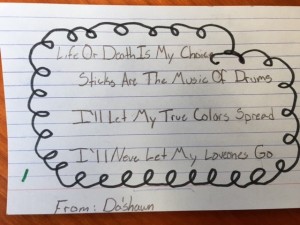 Yesterday I wrote a thing about how the debut memoir seems?in order to be a success?to require a rote approach to structure and form. That memoirs need to look like novels, with a reliance on scenes and a macrostructure that ends with its protagonist’s coming to ultimate terms with his or her conflict. This post picks up where that one left off, and I’m going to try to answer a question: What kinds of memoirs should I assign my students?
Yesterday I wrote a thing about how the debut memoir seems?in order to be a success?to require a rote approach to structure and form. That memoirs need to look like novels, with a reliance on scenes and a macrostructure that ends with its protagonist’s coming to ultimate terms with his or her conflict. This post picks up where that one left off, and I’m going to try to answer a question: What kinds of memoirs should I assign my students?
Position 1: I SHOULD ASSIGN J.R. ACKERLEY
You may recall that what I love about Ackerley is that his book is an original, and that it’s structured intrinsically (i.e., it Proustianly finds its own structure, it lets its unique voice lead the way). It’s a masterwork. It never once reads like a novel-that’s-true, and in this way it highlights the memoirness of a memoir?i.e., the things it does better than any other form.
So, then, I should teach it, right? We should all give our students the highest examples of the form. As guides. Except, my students pay $40,000+ for their MFA degrees, and given the stuff I blogged about yesterday I don’t trust that writing a memoir like Ackerley’s would help them land a book deal, with, maybe, an advance to help them pay off their loans.
Position 2: I SHOULD ASSIGN J.R. MOEHRINGER
It’s an artless hit, a poorly written success, but it does a great job of presenting students a way to take an experience they’re dying to write about?before many have ever written a book or, on the whole, read many old memoirs?in a way that can make it easily shared/absorbed by a wide variety of readers. This in itself isn’t an easy thing to do. Given that my students are risking so much and putting so much on the line to spend 2.5 years doing something they’ve long dreamed of doing, shouldn’t I help them spend this short amount of time learning the tools of how maybe to find commercial success?
Moehringer’s book feels good to the student memoirist the way workshop feedback does: it shines a torchlight on what’s always a dark and murky path. Or does it, again like feedback, build thick guiderails, steering students tightly through what should otherwise be a wild adventure?
Position 3: THE OBVIOUS ANSWER
I know, the answer was clear 8 paragraphs ago: teach both. Show the breadth of approaches students can choose between or orient themselves within the continuum of.
Which means that when it comes to building a diverse reading list we’ve got Formal Approach to add to our already lengthy criteria.
(I’m not complaining, just giving myself a reminder.)